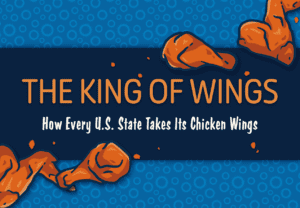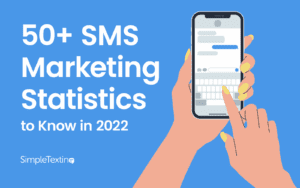Table of Contents
Overview
2 campaigns walk into a bar. One has 20 backlinks and the other has 4. Which is more successful?
When I started working in the digital PR industry, I measured success by the number of backlinks I built for my clients. However, after over 2.5 years, that mindset has shifted quite a bit for me. Sure, I’ve pitched plenty of campaigns that have seen a variety of outcomes. Some have received over 100 backlinks, while others have only seen a handful. But why do I still consider them all successful?
Link-building doesn’t come with a cut-and-dry manual to measure success. The digital PR landscape changes as often as the turnaround in a newsroom. What once worked in your pitching strategy may need to be altered for the new class of editors and journalists on the other end of your email. But as you reframe your pitches, you should also change your measurements of success.
Read on for a a glimpse into how I measure success for my clients!
Quantity of Links
From an early age, many of us gained the perception that more meant better. That still holds up! Generally, the more links you can build for a campaign, the more successful it is! A rule of thumb that I was told in my early years of digital PR was that a ‘typical’ performing campaign at Go Fish would receive anywhere from 8-10 links. Anything more than that would be considered highly successful. And if you look at success from an SEO perspective, a campaign with more links will drive more link equity to the client’s site.
Remember, success isn’t as exact as the numbers 8, 9, and 10. But for the sake of this lesson, let’s look at a few campaigns that I consider successful from the sheer amount of backlinks that they built:
The King of Wings campaign built 45 links, which was not only a success due to the sheer volume of backlinks but because this was also the most links that a single campaign earned for the client to date. As you can imagine, the client was thrilled to see this, and we considered this a successful campaign.
Another example of success measured by quantity was The Most Popular Light Beer and Seltzer In Each State. This campaign earned 35 backlinks – now that’s something to crack open a drink and cheers to!
Quality of Links
It’s often hard to explain to a client that though their campaign only got a handful of links that it’s still considered successful. Like I said earlier, we’ve all been ingrained with the ‘grading scale’ mentally growing up. So how do you explain that a campaign with 7 links is successful? Let’s take a look:
How Much of Your Landlord’s Mortgage Are You Paying as a Renter Across the U.S.? only earned 7 backlinks. So, what makes this a successful campaign? Let’s ask 2 important questions:
Of those links, were any considered ‘high quality’?
Ding ding ding! YES! This campaign received a backlink from The Business Journals in Portland, a site that has a domain authority of 92. The Business Journals provide news to local readers regarding business, real estate, technology, and more, so it was great to have a client featured in this outlet and show the impact on their audience..
Gaining higher quality backlinks can ultimately lead to a site’s increase in domain authority, improved keyword rankings, and help the site appear more authoritative in the eyes of Google and other search engines.
Did this campaign receive any industry-specific backlinks that were in the client’s domain?
Once again, the answer is yes! Inman linked back to the campaign in an article that they wrote solely about the campaign. The client works in the real estate and construction industry, so having them featured in an outlet like Inman is great for brand recognition.
So even though the number 7 may seem small, this campaign was covered by a high-authority site and another site within the client’s industry. Having a combination of high-quality and industry-specific links can help diversify a client’s backlink profile.
The Perfect Recipe
In a perfect world, we’d imagine that a successful campaign would marry the two concepts from above. A campaign would receive a high amount of backlinks, but those backlinks would be high-quality as well. And while we don’t live in a perfect world, this situation does exist!
Take these campaigns for example:
The State of Affordable Housing in U.S. cities has built a total of 89 links to date. Of its coverage, you’ll find links from The New York Times, New York Post, CNBC, Business Insider, and more.
Within The Most Expensive Airbnb in Every U.S. State’s impressive 96 backlinks, you’ll find coverage from House Beautiful, Apartment Therapy, Travel and Leisure, and more.
The Importance of Passive Coverage
While it’s never easy delivering the news of a campaign having a ‘less-than-successful’ amount of links, it’s important to remember that these content pieces still exist on the internet and have the potential to build links beyond the promotion period.
A journalist whom you’ve pitched to may be planning to cover your campaign but has a full calendar and can’t publish it until next month.
A journalist who is researching a specific topic could stumble upon your campaign and include insights from it in their next article. Whatever the case may be, passive coverage should be celebrated.
One example of the power of passive coverage comes from the 2022 Texting & SMS Marketing Statistics campaign. A standard promotion period lasts 6-8 weeks and can be adjusted depending on timely events, topics in the newscycle, etc. This campaign was pitched for 7 weeks and received 31 links in its promotion period. After 10 months following outreach, it’s currently sitting at a whopping 116 backlinks!
While a client may want to see coverage throughout a campaign’s promotion period, it’s important to remember that link-building is a long game. Not every campaign can be an overnight success. The power of passive coverage has proven that digital PR can help build link equity over time.
Conclusion
So there you have it. Well, sort of…
There’s no perfect equation to success in digital PR. If there were, we’d all know exactly how to build high-quality backlinks and A LOT of them for each campaign. Where your campaign lands on the success meter should be looked at from a case-by-case lens, remembering these few measurements:
Did it receive a generally high number of backlinks?
Did it receive a handful of backlinks from high-authority sites?
Does it have potential to be referenced down the line by journalists and receive passive coverage?
Does your campaign possess a combination of these measurements?
…and there you have it! Enjoy your newly framed mindset of measuring success!
Search News Straight To Your Inbox
*Required
Join thousands of marketers to get the best search news in under 5 minutes. Get resources, tips and more with The Splash newsletter:






